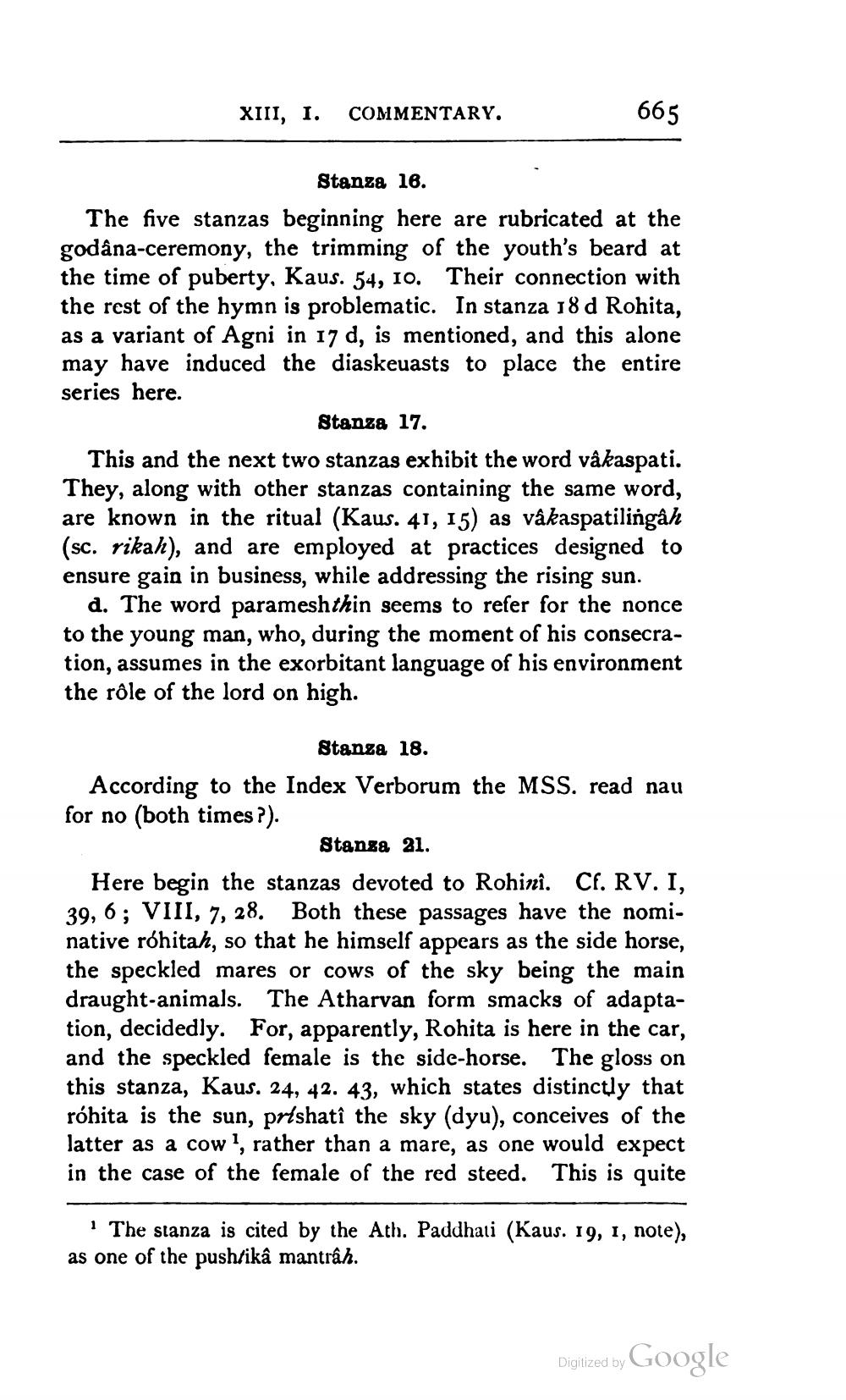________________
XIII, 1.
COMMENTARY.
665
Stanza 16. The five stanzas beginning here are rubricated at the godâna-ceremony, the trimming of the youth's beard at the time of puberty, Kaus. 54, 10. Their connection with the rest of the hymn is problematic. In stanza 18 d Rohita, as a variant of Agni in 17 d, is mentioned, and this alone may have induced the diaskeuasts to place the entire series here.
Stanza 17. This and the next two stanzas exhibit the word vâkaspati. They, along with other stanzas containing the same word, are known in the ritual (Kaus. 41, 15) as vâkaspatilingah (sc. rikah), and are employed at practices designed to ensure gain in business, while addressing the rising sun.
d. The word parameshthin seems to refer for the nonce to the young man, who, during the moment of his consecration, assumes in the exorbitant language of his environment the role of the lord on high.
Stanza 18. According to the Index Verborum the MSS. read nau for no (both times ?).
Stanga 21. Here begin the stanzas devoted to Rohini. Cf. RV. I, 39, 6; VIII, 7, 28. Both these passages have the nominative róhitah, so that he himself appears as the side horse, the speckled mares or cows of the sky being the main draught-animals. The Atharvan form smacks of adaptation, decidedly. For, apparently, Rohita is here in the car, and the speckled female is the side-horse. The gloss on this stanza, Kaus. 24, 42. 43, which states distinctly that róhita is the sun, préshatî the sky (dyu), conceives of the latter as a cow , rather than a mare, as one would expect in the case of the female of the red steed. This is quite
The stanza is cited by the Ath. Paddhati (Kaus. 19, 1, note), as one of the pushtikâ mantrâh.
Digized by Google




